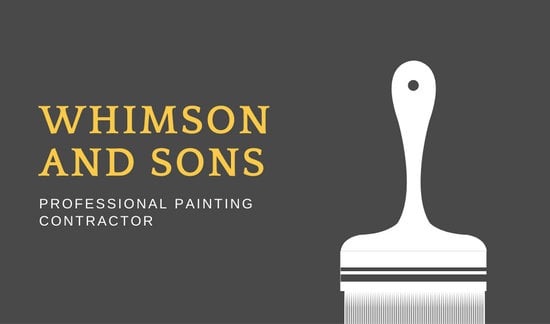Understand How Seasonal Conditions Influence The Success Of Industrial Exterior Painting And Learn The Ideal Periods To Guarantee Lasting End Results For Your Job
Understand How Seasonal Conditions Influence The Success Of Industrial Exterior Painting And Learn The Ideal Periods To Guarantee Lasting End Results For Your Job
Blog Article
Content By-Regan Decker
When you're intending a commercial outside paint project, seasonal elements can make or damage your outcomes. You'll want to consider just how temperature and moisture effect paint application and drying times. Selecting the right season can ensure your paint adheres appropriately and lasts longer. But which periods are absolutely the most effective for this type of work? Let's explore the crucial elements that can affect your task's success.
The Effect of Temperature on Paint Application
When you're intending a business exterior paint job, the temperature can significantly impact how well the paint adheres and dries out.
Ideally, you intend to repaint when temperature levels vary in between 50 ° F and 85 ° F. If it's also chilly, the paint may not cure effectively, leading to problems like peeling or fracturing.
On the flip side, if it's as well hot, the paint can dry out too swiftly, protecting against proper adhesion and causing an uneven coating.
You should likewise consider the moment of day; morning or late afternoon uses cooler temperature levels, which can be extra beneficial.
Always examine the maker's recommendations for the certain paint you're utilizing, as they often give guidance on the optimal temperature range for optimum results.
Humidity and Its Result on Drying Times
Temperature isn't the only ecological variable that affects your commercial outside painting task; humidity plays a substantial function also. High moisture degrees can reduce drying times significantly, influencing the total quality of your paint task.
When the air is saturated with dampness, the paint takes longer to treat, which can bring about issues like poor bond and a greater risk of mildew growth. If you're repainting on an especially damp day, be prepared for extensive delay times in between layers.
https://exteriorhousepaintersnear07395.blogpayz.com/34398202/preparing-for-a-successful-paint-task-starts-with-one-vital-component-that-is-frequently-disregarded-yet-it-can-dramatically-impact-the-result to keep track of neighborhood weather conditions and plan accordingly. Ideally, aim for humidity levels between 40% and 70% for optimum drying.
Keeping these factors in mind guarantees your task stays on track and delivers a long lasting surface.
Best Seasons for Commercial Exterior Painting Projects
What's the most effective time of year for your industrial exterior painting projects?
Spring and very early fall are generally your best choices. During these periods, temperature levels are mild, and humidity levels are commonly reduced, creating ideal problems for paint application and drying.
Avoid summer season's intense heat, which can create paint to dry as well swiftly, bring about inadequate attachment and coating. Likewise, wintertime's chilly temperature levels can impede proper drying and healing, taking the chance of the durability of your paint job.
Aim for days with temperature levels in between 50 ° F and 85 ° F for optimal results. Keep in mind to check the regional weather prediction for rain, as wet problems can wreck your project.
Planning around these variables ensures your paint project runs smoothly and lasts much longer.
Final thought
In conclusion, planning your business exterior painting tasks around seasonal factors to consider can make a significant distinction in the end result. By organizing work throughout the optimal temperature levels and moisture degrees, you'll make sure much better bond and drying out times. Keep in mind to watch on neighborhood weather prediction and select the correct time of year-- springtime and early fall are your best choices. Taking these actions will assist you achieve a sturdy and specialist surface that lasts.
